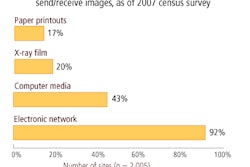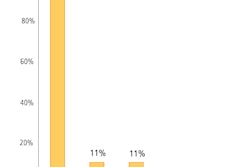Dear AuntMinnie Member,
The number of radiation oncology procedures performed in the U.S. grew by 5% in 2007, but this modest growth belies a major shift in technology adoption that's reshaping the field.
Those are a couple of the conclusions from a new survey on the radiation oncology industry that we're featuring this week in our Radiation Oncology Digital Community. The report, by market research firm IMV Medical Information Division of Des Plaines, IL, tracks practice patterns and technology adoption plans at hundreds of U.S. radiation oncology sites.
The growing use of image guidance is also significantly affecting radiation therapy by enabling providers to guide treatment in real-time. More than half of the surveyed sites were using image-guided radiation therapy in 2007, compared to just 15% in 2004. For the rest of the details, just click here.
In other radiation oncology news, a new study compared two techniques for dose painting, a radiation therapy method in which more dose is delivered to cancerous tissue that's radiation-resistant.
Researchers from the U.S. and Slovenia used two PET-based methods for analyzing tissue for signs of radiation resistance. The good news was that both worked better than just applying a uniform dose to the target volume; the bad news was that they produced somewhat different results, which could lead to the development of different treatment approaches.
Get the rest of the story by clicking here, or visit our Radiation Oncology Digital Community at radiation.auntminnie.com.
Moly supply redux?
In other news, the nuclear medicine community is once again faced with a possible shortage of molybdenum-99, a key radioisotope in the creation of technetium-99m, a commonly used cardiac radiopharmaceutical.
But this time production has been interrupted at a Dutch nuclear reactor, rather than at the Canadian facility that has garnered most of the headlines over the past year. Find out what's going on by clicking here.
Disclosure notice: AuntMinnie.com is a subsidiary of IMV Ltd.



















